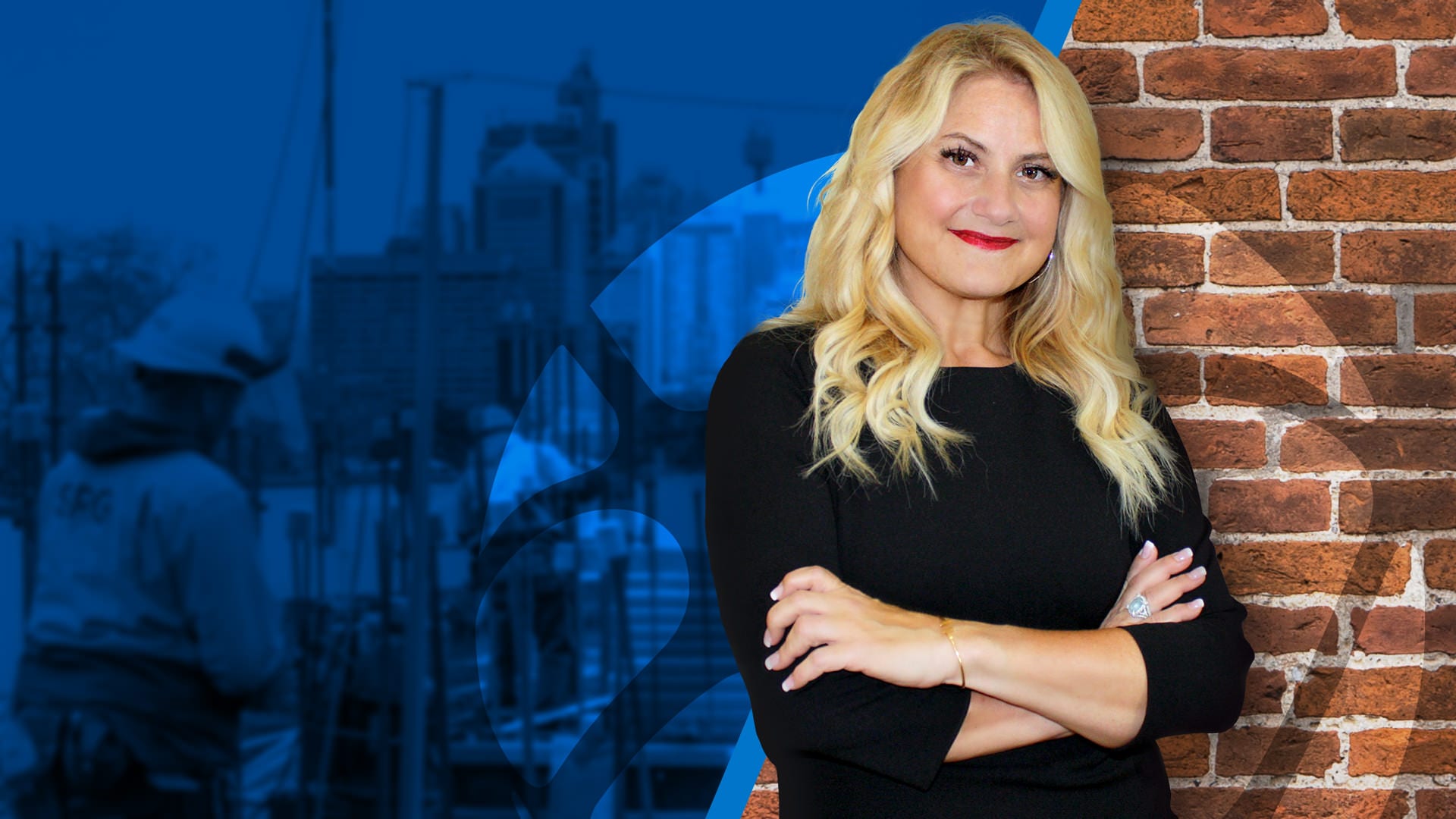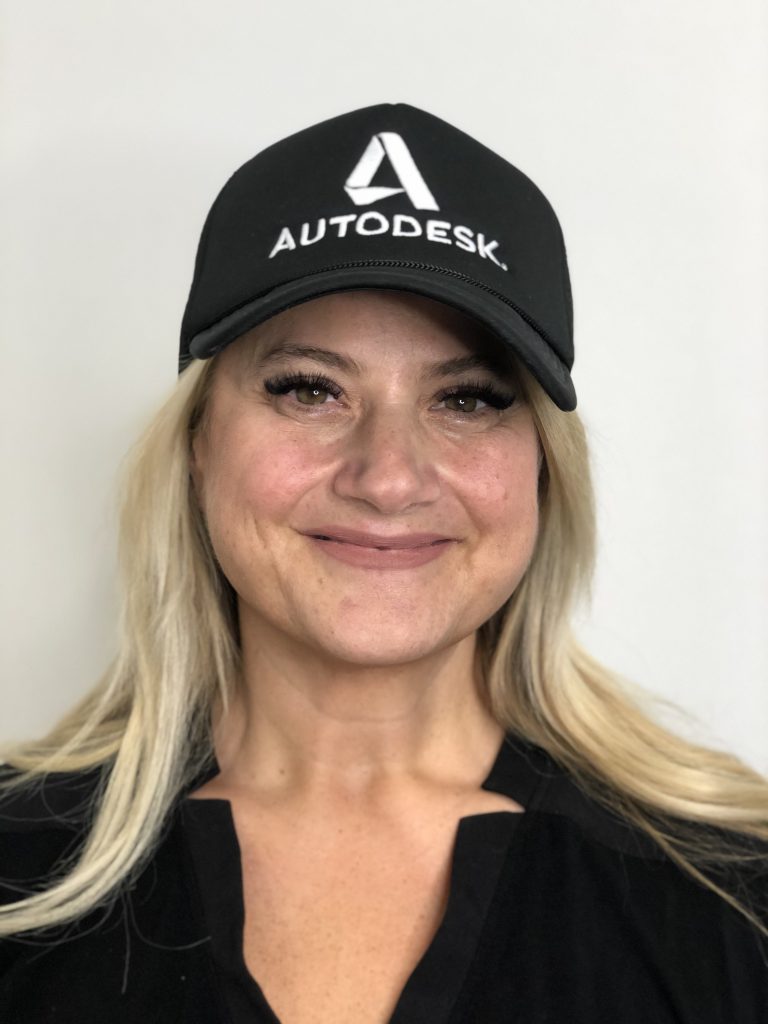
Undeniably, the construction industry is at a critical turning point. By 2050, approximately 9.7 billion people will walk this planet. Today, there’s more pressure than ever for construction teams to deliver complex buildings and infrastructure better, faster, more sustainably, and safer than in the past.
Enter the promise of industrialized construction. Experts like Amy Marks agree:approaching construction from a manufacturing mindset is not only smarter; it's imperative to meet the demands of a growing global population. "Without a commitment to industrialized construction including prefabrication, I don’t think we’ll be able to meet our world’s future infrastructure needs.”
It’s safe to say that Amy knows a thing or two about how industrialized construction can reshape how we build and build as an industry. Known as the Queen of Prefab, Amy recently joined Autodesk as the Head of Industrialized Construction Strategy and Evangelism. In her previous role as CEO of XSite Modular, she defined the language and processes that are now adopted by companies, countries, and builders around the world to enable and optimize prefabrication a subset of industrialized construction. Today, she brings that passion to Autodesk to empower firms to meet the world’s rapidly expanding building and infrastructure needs, all while making construction more predictable, safe, and sustainable.
So, why Autodesk – and why now? We recently sat down with her to learn just that. Watch her thoughts in our video below and read on for more insight on the future of the construction industry.
I grew up in the conventional construction industry in New York. My dad was a construction manager and a general contractor, and my brother now owns that family business.
Everything I saw going on as a young woman, I thought there was always just maybe a better way to do it – a more productive way to build.
I was lucky enough actually to be part of a group that purchased a modular manufacturing company that built steel-concrete modules and also later launched bathroom pods when they were first introduced to the United States. I witnessed what it was to design for manufacturing and assembly (DfMA), including how that process integrated into the factory. We also had an adjacent design team right next to our factory floor. I saw how that collaboration could make things better.
Once I started XSite, I saw how lots of off-site elements and prefabricated components could work on a construction site. It became clear that manufacturing was just a better way to build. If I look back, my family was always pushing me to do things better. I've been able to realize that through industrialized construction and prefabrication.
I've been the CEO of my certified, woman-owned business for a while now. I’ve helped to teach a repeatable prefabrication process to firms, governments, owners, architects, engineers around the world. Owning a small company, I feel like I've achieved the maximum for enabling prefabrication and industrialized construction at a global level as a single entity, but this is a heavy lift for industry transformational change

After I looked both across and outside the industry, I decided to join Autodesk because I feel it is truly the best-positioned company in the world to enable a transformational change to optimize industrialized construction, including prefabrication. As I see the convergence between design, construction, manufacturing, and operations, Autodesk has the resources, intelligence, and an innovative global customer base, and I felt the passion of all the people there to make things better.
Autodesk has all the pieces of the puzzle to make this work for the future.
The first thing that I'm excited about doing at Autodesk is talking with people and leaders across the organization involved in industrialized construction at many different levels. By learning from and aggregating that group of champions, we can start to understand the current state of industrialized construction and how it has touched our clients.
Secondly, I'm going to reach out to a diverse group of stakeholders from inside and outside the industry to understand where some of the enablers and constraints have been in adopting prefabrication and other forms of industrialized construction. I want to ensure that we're heading down the right path, getting buy-in, and planning for the future convergence and digitization of design, construction, manufacturing, and operations. It’s essential to create synergy between what's happening now at Autodesk what’s happening in the industry, and to learn from other industries to prepare for a productive, collaborative future.
The process of how we design, manufacture, and construct isn't currently optimized for industrialized construction including prefabrication.
As an industry, Autodesk products can enable us to effectively support industrialized construction methodologies.
We provide all the tools to support collaboration and this naturally creates a red thread between design, manufacturing, construction, assembly, and operations. This will help break down some of these siloed areas and bring together all collaborators upfront during conceptualization and continue through operations.
Right now, there's a limited amount of knowledge available when it comes to leveraging industrialized construction and prefabrication. I believe that scaling through software and working through Autodesk is going to be the most efficient and effective way to do so.
Industrialized construction opens up new opportunities for our future. Today, there's a huge need for infrastructure in our world. We need more roads, schools, hospitals, hotels, data centers, and housing. We have to find a better way to build this with less skilled labor; we need to figure out how to do more with less. Industrialized construction also creates certainty of cost and schedule, something in the design and construction industry that has been elusive using conventional methods.
Industrialized construction is going to allow for a more socially responsible, productive, and safer way to get this done. Without a commitment to industrialized construction and prefabrication, I don’t think we’ll be able to meet our world’s future infrastructure needs.
It's imperative that we understand how IC can move us forward into the future.
Right now, there’s a significant opportunity in IC for women. For those who are responsible for childcare that work in the industry, including both men and women, working on a conventional construction site can be challenging, especially if you're moved around to different sites. IC opens opportunities to co-locate daycare facilities with factories. If you're going to the same factory every day or even better if they have a co-located daycare facility at that factory site, it makes it easy to plan for childcare. This would also empower more women to enter or rejoin the workforce after having kids as they are sometimes a forgotten segment of the potential workforce.
Beyond that, industrialized construction is excellent for a younger generation of workers. It provides an excellent opportunity to gain new digital and technology skills. Currently, there is a technology uprising in industrialized construction including factory automation, 3D printing, building information modeling, AI, and other collaborative and intuitive tools in a factory environment. In construction, it’s very difficult to learn everything but a controlled factory setting allows people to be specialists in a finite amount of work. At the same time, it gives them the opportunity to see multi-trade sub-assemblies and modules as well as structure to MEP and fire to finish work. It allows them to further their education faster than they would if they were just on a regular jobsite. Manufacturing moves at a faster learning pace than construction due to the nature of many projects moving through a factory.
Interested in learning more about Autodesk’s role in industrialized construction? Follow Amy on LinkedIn, Facebook, Twitter, and Instagram in addition to Autodesk Construction Solutions. You can also join the conversation using #IndustrializedConstruction #IC #queenofprefab.
